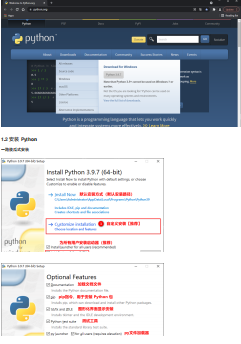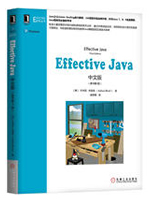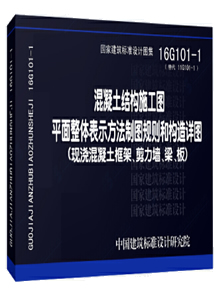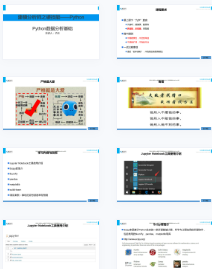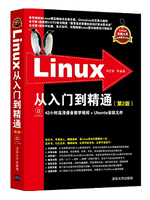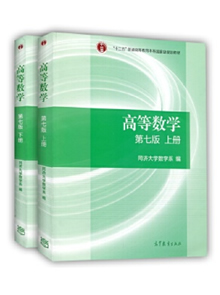给大家整理一篇相关的编程文章,网友弓平彤根据主题投稿了本篇教程内容,涉及到MyBatis 关联刷新、MyBatis二级缓存、MyBatis 关联刷新相关内容,已被375网友关注,相关难点技巧可以阅读下方的电子资料。
MyBatis 关联刷新
1.MyBatis缓存介绍
Mybatis提供对缓存的支持,但是在没有配置的默认情况下,它只开启一级缓存,二级缓存需要手动开启。
一级缓存只是相对于同一个SqlSession而言。 也就是针对于同一事务,多次执行同一Mapper的相同查询方法,第一查询后,MyBatis会将查询结果放入缓存,在中间不涉及相应Mapper的数据更新(Insert,Update和Delete)操作的情况下,后续的查询将会从缓存中获取,而不会查询数据库。
二级缓存是针对于应用级别的缓存,也就是针对不同的SqlSession做到缓存。 当开启二级缓存时,MyBatis会将首次查询结果存入对于Mapper的全局缓存,如果中间不执行该Mapper的数据更新操作,那么后续的相同查询都将会从缓存中获取。
2.二级缓存问题
根据二级缓存的介绍发现,如果Mapper只是单表查询,并不会出现问题,但是如果Mapper涉及的查询出现 联表 查询,如 UserMapper 在查询 user 信息时需要关联查询 组织信息,也就是需要 user 表和 organization 表关联,OrganizationMapper 在执行更新时并不会更新 UserMapper 的缓存,结果会导致在使用相同条件 使用 UserMapper 查询 user 信息时,会等到未更新前的 organization 信息,造成数据不一致的情况。
2.1 数据不一致问题验证
查询SQL
SELECT
u.*, o.name org_name
FROM
user u
LEFT JOIN organization o ON u.org_id = o.id
WHERE
u.id = #{userId}
UserMapper
UserInfo queryUserInfo(@Param("userId") String userId);
UserService
public UserEntity queryUser(String userId) {
UserInfo userInfo = userMapper.queryUserInfo(userId);
return userInfo;
}调用查询,得到查询结果(多次查询,得到缓存数据),这里 userId = 1,data为user查询结果
{
"code": "1",
"message": null,
"data": {
"id": "1",
"username": "admin",
"password": "admin",
"orgName": "组织1"
}
}
查询 对应 organization 信息,结果
"code": "1",
"message": null,
"data": {
"id": "1",
"name": "组织1"
}
}
执行更新 organization 操作,将 组织1 改为 组织2,再次查询组织信息
"code": "1",
"message": null,
"data": {
"id": "1",
"name": "组织2"
}
}
再次查询user信息,发现依旧从缓存中获取
"code": "1",
"message": null,
"data": {
"id": "1",
"username": "admin",
"password": "admin",
"orgName": "组织1"
}
}
造成此问题原因为 organization 数据信息更新只会自己Mapper对应的缓存数据,而不会通知到关联表organization 的一些Mapper更新对应的缓存数据。
2.2 问题处理思路
在 Mapper1 定义时,手动配置 相应的关联 Mapper2
在 Mapper1 缓存 cache1 实例化时,读取 所关联的 Mapper2 的缓存 cache2相关信息
在 cache1 中存储 cache2 的引用信息
cache1 执行clear时,同步操作 cache2 执行clear
3.关联缓存刷新实现
打开二级缓存,本地项目使用 MyBatis Plus
mybatis-plus.configuration.cache-enabled=true
主要用到自定义注解CacheRelations,自定义缓存实现RelativeCache和缓存上下文RelativeCacheContext。
@Target(ElementType.TYPE)
@Retention(RetentionPolicy.RUNTIME)
public @interface CacheRelations {
// from中mapper class对应的缓存更新时,需要更新当前注解标注mapper的缓存
Class<?>[] from() default {};
// 当前注解标注mapper的缓存更新时,需要更新to中mapper class对应的缓存
Class<?>[] to() default {};
}
RelativeCache实现 MyBatis Cache 接口
public class RelativeCache implements Cache {
private Map<Object, Object> CACHE_MAP = new ConcurrentHashMap<>();
private List<RelativeCache> relations = new ArrayList<>();
private ReadWriteLock readWriteLock = new ReentrantReadWriteLock(true);
private String id;
private Class<?> mapperClass;
private boolean clearing;
public RelativeCache(String id) throws Exception {
this.id = id;
this.mapperClass = Class.forName(id);
RelativeCacheContext.putCache(mapperClass, this);
loadRelations();
}
@Override
public String getId() {
return id;
}
@Override
public void putObject(Object key, Object value) {
CACHE_MAP.put(key, value);
}
@Override
public Object getObject(Object key) {
return CACHE_MAP.get(key);
}
@Override
public Object removeObject(Object key) {
return CACHE_MAP.remove(key);
}
@Override
public void clear() {
ReadWriteLock readWriteLock = getReadWriteLock();
Lock lock = readWriteLock.writeLock();
lock.lock();
try {
// 判断 当前缓存是否正在清空,如果正在清空,取消本次操作
// 避免缓存出现 循环 relation,造成递归无终止,调用栈溢出
if (clearing) {
return;
}
clearing = true;
try {
CACHE_MAP.clear();
relations.forEach(RelativeCache::clear);
} finally {
clearing = false;
}
} finally {
lock.unlock();
}
}
@Override
public int getSize() {
return CACHE_MAP.size();
}
@Override
public ReadWriteLock getReadWriteLock() {
return readWriteLock;
}
public void addRelation(RelativeCache relation) {
if (relations.contains(relation)){
return;
}
relations.add(relation);
}
void loadRelations() {
// 加载 其他缓存更新时 需要更新此缓存的 caches
// 将 此缓存 加入至这些 caches 的 relations 中
List<RelativeCache> to = UN_LOAD_TO_RELATIVE_CACHES_MAP.get(mapperClass);
if (to != null) {
to.forEach(relativeCache -> this.addRelation(relativeCache));
}
// 加载 此缓存更新时 需要更新的一些缓存 caches
// 将这些缓存 caches 加入 至 此缓存 relations 中
List<RelativeCache> from = UN_LOAD_FROM_RELATIVE_CACHES_MAP.get(mapperClass);
if (from != null) {
from.forEach(relativeCache -> relativeCache.addRelation(this));
}
CacheRelations annotation = AnnotationUtils.findAnnotation(mapperClass, CacheRelations.class);
if (annotation == null) {
return;
}
Class<?>[] toMappers = annotation.to();
Class<?>[] fromMappers = annotation.from();
if (toMappers != null && toMappers.length > 0) {
for (Class c : toMappers) {
RelativeCache relativeCache = MAPPER_CACHE_MAP.get(c);
if (relativeCache != null) {
// 将找到的缓存添加到当前缓存的relations中
this.addRelation(relativeCache);
} else {
// 如果找不到 to cache,证明to cache还未加载,这时需将对应关系存放到 UN_LOAD_FROM_RELATIVE_CACHES_MAP
// 也就是说 c 对应的 cache 需要 在 当前缓存更新时 进行更新
List<RelativeCache> relativeCaches = UN_LOAD_FROM_RELATIVE_CACHES_MAP.putIfAbsent(c, new ArrayList<RelativeCache>());
relativeCaches.add(this);
}
}
}
if (fromMappers != null && fromMappers.length > 0) {
for (Class c : fromMappers) {
RelativeCache relativeCache = MAPPER_CACHE_MAP.get(c);
if (relativeCache != null) {
// 将找到的缓存添加到当前缓存的relations中
relativeCache.addRelation(this);
} else {
// 如果找不到 from cache,证明from cache还未加载,这时需将对应关系存放到 UN_LOAD_TO_RELATIVE_CACHES_MAP
// 也就是说 c 对应的 cache 更新时需要更新当前缓存
List<RelativeCache> relativeCaches = UN_LOAD_TO_RELATIVE_CACHES_MAP.putIfAbsent(c, new ArrayList<RelativeCache>());
relativeCaches.add(this);
}
}
}
}
}缓存上下文RelativeCacheContext
public class RelativeCacheContext {
// 存储全量缓存的映射关系
public static final Map<Class<?>, RelativeCache> MAPPER_CACHE_MAP = new ConcurrentHashMap<>();
// 存储 Mapper 对应缓存 需要to更新缓存,但是此时 Mapper 对应缓存还未加载
// 也就是 Class<?> 对应的缓存更新时,需要更新 List<RelativeCache> 中的缓存
public static final Map<Class<?>, List<RelativeCache>> UN_LOAD_TO_RELATIVE_CACHES_MAP = new ConcurrentHashMap<>();
// 存储 Mapper 对应缓存 需要from更新缓存,但是在 加载 Mapper 缓存时,这些缓存还未加载
// 也就是 List<RelativeCache> 中的缓存更新时,需要更新 Class<?> 对应的缓存
public static final Map<Class<?>, List<RelativeCache>> UN_LOAD_FROM_RELATIVE_CACHES_MAP = new ConcurrentHashMap<>();
public static void putCache(Class<?> clazz, RelativeCache cache) {
MAPPER_CACHE_MAP.put(clazz, cache);
}
public static void getCache(Class<?> clazz) {
MAPPER_CACHE_MAP.get(clazz);
}
}UserMapper:
@Repository
@CacheNamespace(implementation = RelativeCache.class, eviction = RelativeCache.class, flushInterval = 30 * 60 * 1000)
@CacheRelations(from = OrganizationMapper.class)
public interface UserMapper extends BaseMapper<UserEntity> {
UserInfo queryUserInfo(@Param("userId") String userId);
}queryUserInfo是xml实现的接口,所以需要在对应xml中配置,不然查询结果不会被缓存化。如果接口为 BaseMapper实现,查询结果会自动缓存化。
UserMapper.xml
<mapper namespace="com.mars.system.dao.UserMapper">
<cache-ref namespace="com.mars.system.dao.UserMapper"/>
<select id="queryUserInfo" resultType="com.mars.system.model.UserInfo">
select u.*, o.name org_name from user u left join organization o on u.org_id = o.id
where u.id = #{userId}
</select>
</mapper>
OrganizationMapper.java
@Repository
@CacheNamespace(implementation = RelativeCache.class, eviction = RelativeCache.class, flushInterval = 30 * 60 * 1000)
public interface OrganizationMapper extends BaseMapper<OrganizationEntity> {
}
CacheNamespace中flushInterval 在默认情况下是无效的,也就是说缓存并不会定时清理。ScheduledCache是对flushInterval 功能的实现,MyBatis 的缓存体系是用装饰器进行功能扩展的,所以,如果需要定时刷新,需要使用ScheduledCache给到 RelativeCache添加装饰。
4.验证
查询 userId=1的用户信息
"code":"1",
"message":null,
"data":{
"id":"1",
"username":"admin",
"password":"admin",
"orgName":"组织1"
}
}
更新组织信息,将 组织1 改为 组织2
"code":"1",
"message":null,
"data":{
"id":"1",
"name":"组织2"
}
}
再次查询用户信息
"code":"1",
"message":null,
"data":{
"id":"1",
"username":"admin",
"password":"admin",
"orgName":"组织2"
}
}
到此这篇关于MyBatis二级缓存实现关联刷新的文章就介绍到这了,更多相关MyBatis 关联刷新内容请搜索码农之家以前的文章或继续浏览下面的相关文章希望大家以后多多支持码农之家!


